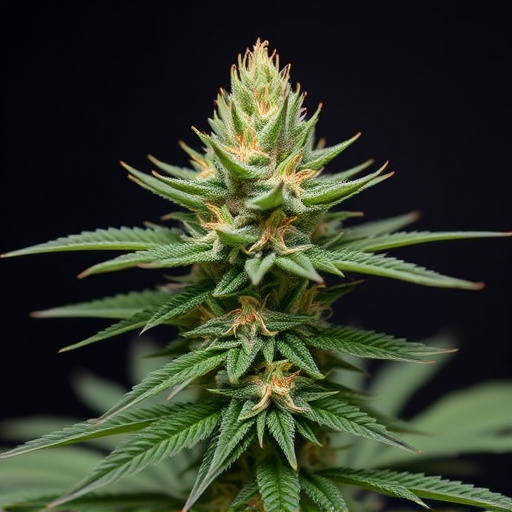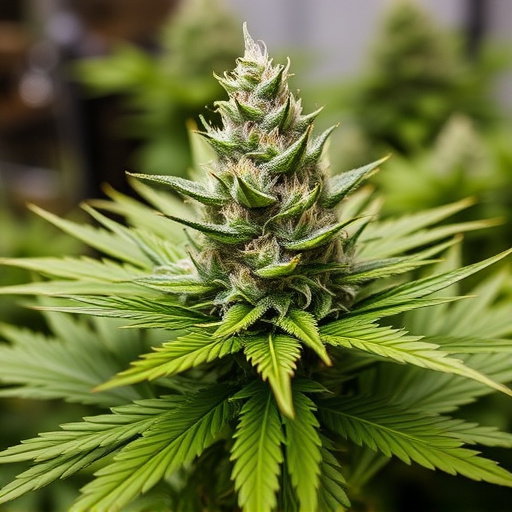Cannabis Cup winning strains' unique genetic profiles and terpene compositions significantly impact detection times. Higher THC levels and specific aromatic compounds can lead to quicker identification in tests like urinalysis, while genetic diversity affects metabolic rates, causing varied cannabinoid breakdown and excretion. Understanding these factors is crucial for consumers and legal professionals to navigate detection windows, inform policy, and make informed strain choices in legalized markets.
“Unraveling the mysteries of cannabis detection times is crucial for understanding its effects, especially in light of growing popularity. This article delves into the multifaceted factors that influence how long cannabis remains detectable in an individual’s system. From the unique genetics and cannabinoid composition of prestigious cannabis cup winning strains to consumption methods and individual metabolic variations, each element plays a pivotal role. By exploring these factors, we aim to provide insights for both consumers and professionals, fostering informed decisions and responsible use.”
- Genetics and Cannabinoid Composition
- – Influence of terpene profiles on detection times
- – Genetic variations in cannabis strains and their impact
Genetics and Cannabinoid Composition

The genetics and cannabinoid composition of cannabis plants play a significant role in determining detection times. Cannabis cup winning strains, renowned for their exceptional qualities, often possess unique genetic profiles that influence metabolite production and breakdown. Different strains may have varying levels of THC (tetrahydrocannabinol) and CBD (cannabidiol), the primary psychoactive and non-psychoactive cannabinoids, respectively. Higher concentrations of these compounds can extend detection windows, as they are more readily detectable in various tests.
Moreover, genetic diversity introduces variations in plant metabolism, affecting the rate at which cannabinoids are metabolized and excreted. Some strains may have evolved to produce less volatile cannabinoids, making them harder for conventional testing methods to identify. Understanding these genetic factors is crucial when considering detection times, especially among cannabis enthusiasts and those subject to regular testing.
– Influence of terpene profiles on detection times

The terpene profiles of cannabis plants play a significant role in determining detection times, especially for high-profile tests involving sporting events or employment screenings. Terpenes are aromatic compounds naturally present in cannabis, each with unique properties that can interact with the human body and external factors. Strains known for their distinctive flavors and aromas, often celebrated at Cannabis Cups, typically have terpene profiles that contribute to both the plant’s appeal and its detectability. For instance, myrcene, a common terpene with a earthy, musky scent, is known for its sedative effects and has been linked to longer detection windows due to its slow metabolism. Conversely, limonene, found in citrusy strains, may enhance cannabis’ volatility, leading to shorter detection times.
Cannabis cup winning strains often leverage their terpene profiles as a key selling point, but these same characteristics can also make them more readily detectable. Understanding the interplay between terpene composition and detection times is crucial for both consumers seeking accurate test results and researchers aiming to uncover the full spectrum of cannabis’ effects.
– Genetic variations in cannabis strains and their impact

Cannabis cup winning strains often exhibit genetic variations that can significantly impact detection times. These rare and carefully cultivated varieties are known for their distinctive terpene profiles and robust cannabinoid content, which not only contribute to unique flavors and effects but also affect how quickly and strongly the substance is detected. For instance, high THC levels, a common trait in many cannabis cup winners, can lead to more rapid detection, especially in urinalysis tests.
Genetic diversity within cannabis allows for varying metabolic rates and cannabinoid degradation, resulting in extended or shortened detection windows. Understanding these genetic variations is crucial for consumers and legal experts alike, as it informs responsible use and policy-making. This knowledge empowers individuals to make informed choices about strain selection, especially in jurisdictions where cannabis is legalized, ensuring a safer and more predictable experience.
Understanding the factors that influence cannabis detection times is crucial for both consumers and legal authorities. Genetics play a significant role, with different strains possessing unique cannabinoid compositions and terpene profiles that can extend or shorten detection windows. Cannabis cup winning strains, renowned for their distinct aromas and effects, offer valuable insights into these variations. By recognizing how genetic diversity and chemical compounds impact detection times, individuals can make more informed choices and law enforcement can develop more accurate testing methods, ensuring public safety and clarity in cannabis-related regulations.














